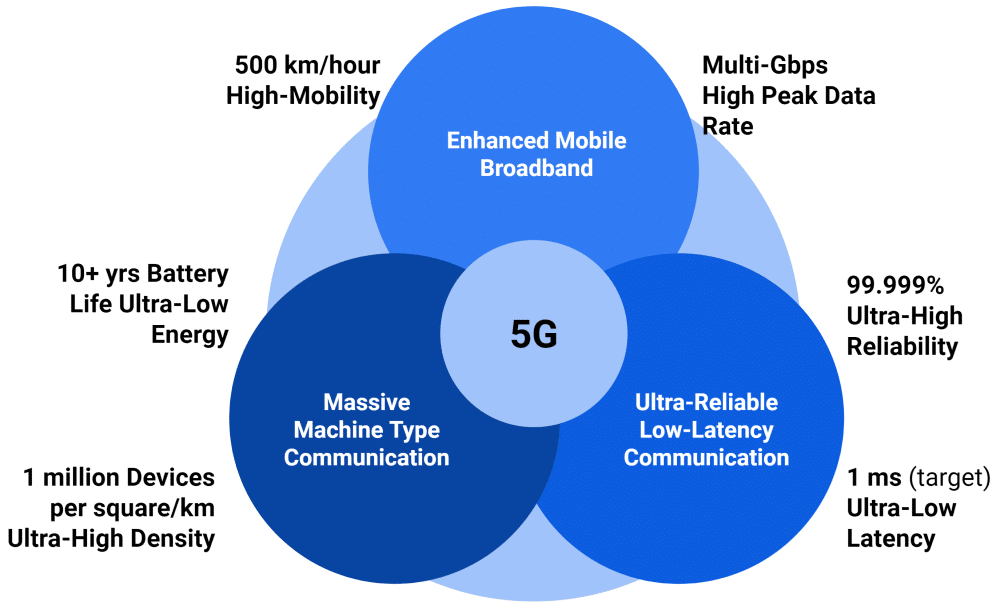5G offers many exciting use cases for enterprises, enabling them to improve operations, increase efficiency, and drive innovation. Here are some examples of how 5G can be used in different industries from an enterprise perspective:
Manufacturing: In addition to real-time monitoring and control of industrial processes, 5G can also enable the use of collaborative robots, or “cobots,” which can work alongside humans in assembly and other tasks. This can improve productivity, safety, and flexibility.
Logistics and Transportation: 5G can enable seaports and airports to optimize their operations by providing real-time tracking and control of goods and assets, as well as automated processes. For example, cargo handling equipment can be equipped with sensors to track cargo and optimize handling, while automated drones can be used for inspection and maintenance tasks.
Agriculture: In addition to precision farming, 5G can also enable the use of autonomous farming equipment, such as drones and robots, which can help automate tasks like seeding, spraying, and harvesting. This can improve productivity, reduce labor costs, and optimize resource usage.
Energy and Utilities: 5G can enable the use of smart grids, which can optimize energy distribution, reduce energy waste, and improve the reliability of the power supply. This can also help integrate renewable energy sources and enable energy trading between consumers.
Healthcare: In addition to remote healthcare applications, 5G can enable the use of augmented reality (AR) and virtual reality (VR) for medical training and simulation, as well as remote surgical procedures. This can help improve medical outcomes, reduce costs, and increase access to healthcare services.
Smart Cities: 5G can enable the use of advanced traffic management systems, public safety applications, and environmental monitoring solutions. This can improve the safety, efficiency, and sustainability of cities, as well as enhance the quality of life for citizens.
Mining: 5G can enable the use of autonomous mining equipment, such as trucks, drills, and excavators, which can help automate tasks like drilling, hauling, and loading. This can improve safety, reduce labor costs, and optimize resource usage.
Transportation: In addition to seaports and airports, 5G can be used in the wider transportation sector to optimize operations and improve efficiency. For example:
- Connected Vehicles: 5G can enable vehicle-to-vehicle (V2V) and vehicle-to-infrastructure (V2I) communication, which can improve safety and reduce congestion. Connected vehicles can communicate with each other and with infrastructure to share information about road conditions, traffic, and weather, allowing drivers to make better decisions and avoid accidents.
- Smart Traffic Management: 5G can enable the use of advanced traffic management systems, which can optimize traffic flow and reduce congestion. This can be achieved through real-time monitoring and control of traffic lights, road signs, and other infrastructure.
- Autonomous Vehicles: 5G can enable the use of autonomous vehicles, which can provide safer, more efficient, and more comfortable transportation. This is made possible through 5G’s low latency and high bandwidth, which enable real-time communication between vehicles and infrastructure.
- Fleet Management: 5G can enable real-time tracking and control of vehicles, which can help optimize fleet management and improve efficiency. This can be achieved through the use of sensors, GPS, and other technologies, which can provide real-time information about vehicle location, fuel usage, and maintenance needs.
Overall, 5G offers many exciting possibilities for improving operations, increasing efficiency, and driving innovation in various industries. By leveraging 5G’s high-speed connectivity, low latency, and increased capacity, enterprises can transform their operations and create a competitive advantage in their industries.




























































